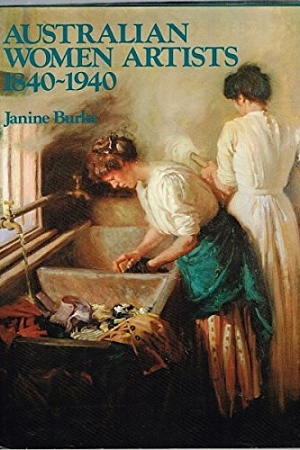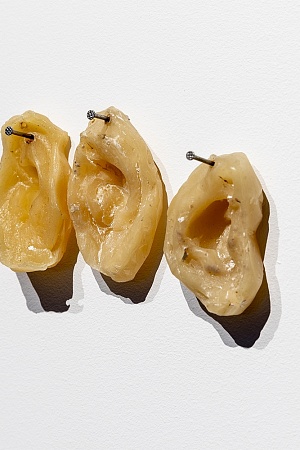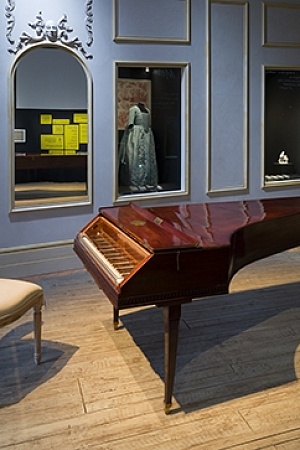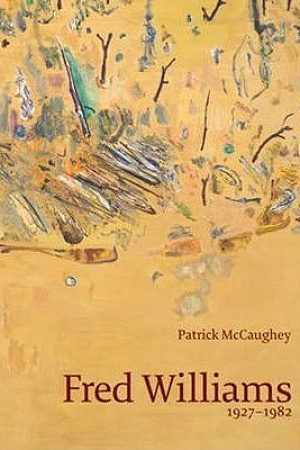Emily Kam Kngwarray
, 1994, NGA © Emily Kam Kngwarray Copyright Agency, licensed by DACS 2025.png)
Nearly thirty years after her death in 1996, the celebrated Anmatyerr artist Emily Kam Kngwarray is having her moment in Europe’s largest art capital. In conjunction with the National Gallery of Australia (NGA), Tate Modern has mounted a grand survey of over eighty works, from the earliest batiks in the 1970s to the great paintings from the mid-1990s. My question, when I attended the exhibition in London: how is this vibrant art understood there? Apart from sporadic showings in group exhibitions – notably, the Royal Academy’s 2013 exhibition Australia, which included the extraordinary Big yam Dreaming (1995), on loan from the National Gallery of Victoria (NGV) – Kngwarray’s work has not been the subject of a major solo exhibition. This is London’s chance to take the measure of one of Australia’s greatest painters.
The exhibition was first seen at the NGA over the summer of 2023-24, so what was different at Tate? At Tate, the curators requested additional contextual material – such as photographs and a soundtrack of an Anmatyerr women’s singing ceremony – while the inclusion of works from European collections alleviated freight costs. While some key works from Australia were omitted, the European additions highlighted that continent’s changing perceptions of Indigenous art. Critic Anny Shaw, writing in The Standard this July, noted that more attention is being paid to Indigenous artists in Europe. A small but persistent cohort in Europe has been collecting the works of Australian Aboriginal artists for decades; loans from the Essl Collection, now held in the Albertina Museum in Vienna, and from Bérengère Primat’s Fondation Opale, in Switzerland, indicate longstanding interest in Emily’s work.
Importantly, such attention no longer derives from a longstanding European fascination with ‘primitive art’ but reflects engagement with contemporary artists and the ways in which they work today. In London, Kngwarray’s bold canvases seemed to speak directly to Tate visitors, in rooms singing with colour and life: I observed their delight. That said, the Australian curatorial team – the NGA’s Kelli Cole and Hetti Perkins, along with Kimberley Moulton (Adjunct Curator of Indigenous Art at Tate) and Jennifer Green, a linguist who has worked with Anmatyerr women at Utopia for many years – privileged the strong basis in Law, knowledge, and ceremony that underpins Kngwarray’s work. The exhibition draws on personal knowledge of the artist from her community and extended family, as well as consultation with perhaps the last first-hand witnesses of her life and work.
 Emily Kam Kngwarray, Kam 1991, National Gallery of Victoria
Emily Kam Kngwarray, Kam 1991, National Gallery of Victoria
At first glance, the scrupulously chronological presentation of Kngwarray’s work seems to understate her achievement. Yet the scale of her vision became clear in the transition from batik to canvas, and its epic quality was revealed in the explosion of colour across the fourth and fifth rooms. In these smaller, contained settings, the larger canvases – brilliant paintings from the early 1990s, some acquired in the year of their making by leading Australian museums – are dazzling. The confidence of the 1992 painting Untitled (Alhalker), for instance, with its ravishing colours, is remarkable. On loan from the Art Gallery of New South Wales, it would be extraordinary anywhere. What the Tate exhibition clearly shows is the intelligence, purpose, and driving energy that sustained Kngwarray’s project as an artist.
Whatever the quibbles among some Australian critics surrounding omissions and positions – and no London exhibition of Australian art is ever free of post-colonised anxieties or mini-turf wars – the Tate exhibition reveals Kngwarray’s work as remarkably exciting. The Alhalker room, with the NGA’s twenty-two-part Alhalker Suite at its heart, is magnificent. The Awely room made up of lively dancing canvases based on body painting – some included in Fluent, the 1997 Venice Biennale exhibition – resonates with the rhythms of the dance: Untitled (awely) (1994), from the NGA, is glorious. Across the entire exhibition, one sees a variety of different kinds of marks and pictorial schemes, in a succession of joyous rooms.
I do have one criticism. As so often with Tate Modern exhibitions, I regret the overcrowding; these are cramped, underlit rooms, with some works hung vertically for space reasons. Not all repurposed buildings are equally useful, and Tate Modern is an unfortunate example of the obduracy of inherited architecture.
What of the reception by the UK press and public? It has been generally positive, generous, and open. Attendances have been solid, with a slew of approving reviews, though some struggle with what Anny Shaw called ‘the conundrum’ of Kngwarray’s work. Veteran art critic Adrian Searle, writing for The Guardian in July, put this in a nutshell:
Kngwarray’s paintings might well remind you of a kind of gestural abstraction they have nothing to do with, and which the artist would never in any case have seen. The things we look at in Kngwarray’s art are about an entirely different order of experience … But this similarity is also one of the reasons Kngwarray became famous in the first place.
All the palaver – both in Australia and the United Kingdom – about whether Kngwarray was an abstract or representational painter, is hopelessly impoverished. It falters most obviously by imposing upon her work irrelevant cultural referents from Western European art. Her eleven years working with batik, developing a recognisable set of representations that anticipated her later paintings, must be understood in relation to the millennia-long practice of making drawings in sand. By her last years, when she worked with acrylic on canvas, Kngwarray had already undertaken much exploration. Put simply, she had developed her own repertoire of marks.
And then there is the category mistake about abstraction itself. While many of Kngwarray’s batiks and paintings depict objects in the world recognisable in Western painting conventions, these are often depicted through degrees of abstraction. Bush foliage and flowers are still that, even if a painting shows ecstatic fields of dots: take Kam (1991), on loan from the NGV, which pictures the seed of the plant from which Emily Kam Kngwarray’s name derives. Conversely, the late Awelye paintings, which seem entirely non-objective, are straightforward transpositions of Anmatyerr women’s ceremonial body painting, with the added complexity that these banded stripes signify much more for the knowledgeable women themselves. So, Kngwarray is representing her world, by abstracting from it. This is not an either/or question, then, but one that permits multiple possibilities.
Kngwarray’s great project is not easily translatable, after all. Like much art from other cultures, something always evades understanding. But how wonderful to walk into another’s world, into that colour; to meet that challenge, on the other side of the globe. The last word goes to a line from the 2023 film accompanying the exhibition: ‘The paintings are real – what Kngwarray painted is alive and true. That’s why the old woman is famous.’
Emily Kam Kngwarray continues at London’s Tate Modern until 11 January 2026.







